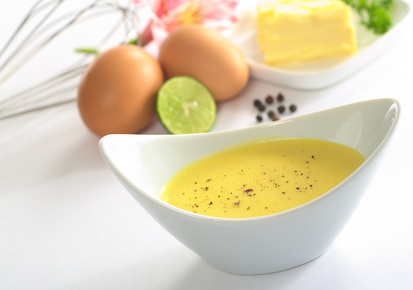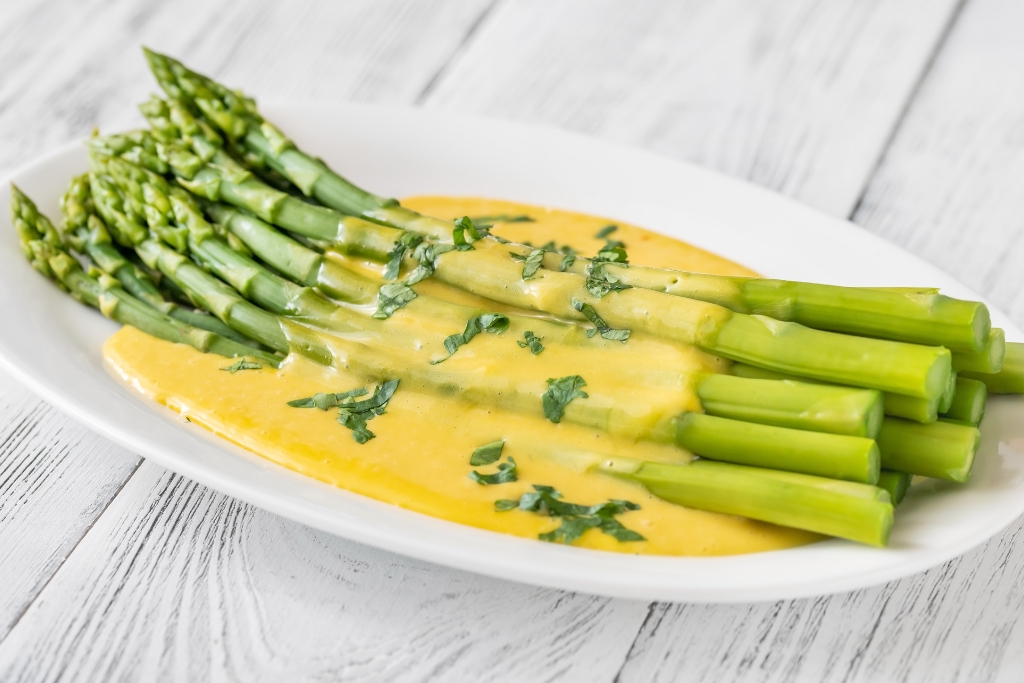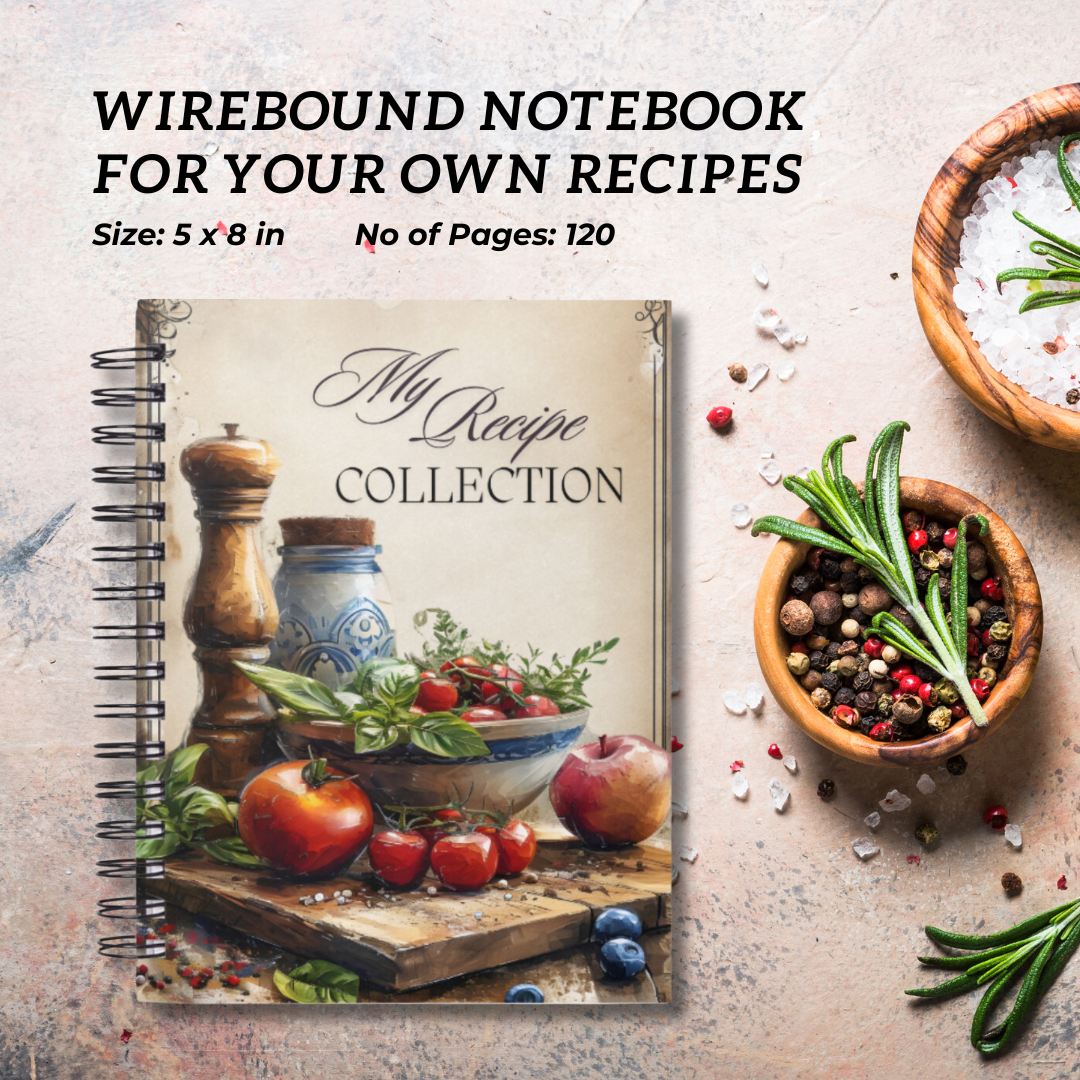How to Make Hollandaise Sauce
Hollandaise sauce is a golden, velvety emulsion of eggs and butter, sharpened with a little lemon juice. It's indispensible when serving the first English asparagus! That aside, it's also great with poached salmon, new potatoes and - of course - Eggs Benedict for an indulgent brunch. I've also served it with steamed broccoli and cauliflower, as a sauce for fillets of cod or other white fish.
Hollandaise sauce is French in origin, but according to Wikipedia it is so named because it was believed to have mimicked a sauce made for the King of the Netherland's state visit to France.
It has been used in English cookery since (at least) the middle of the 19th century and always had the reputation of being difficult to make, though I find that with a little attention and care everyone can learn how to make Hollandaise sauce. The trick is to control the heat carefully, so that the eggs and butter blend beautifully and without turning into a bowl of buttery scrambled eggs.
There are two very different routes to the perfect sauce. You can either use the traditional double boiler method, or you can learn how to make Hollandaise Sauce using your blender or food processor. Choose the one that seems easiest to you:
 Hollandaise Sauce © Ildi | fotolia.com
Hollandaise Sauce © Ildi | fotolia.com
Ingredients
To feed four people, you need:
- 3 egg yolkes (free-range and organic would be my choice)
- 200g unsalted butter
- juice of 1/2 lemon
- salt and black pepper
Traditional Method
The traditional method of making Hollandaise Sauce involves a double boiler (or bain-marie), which allows you to cook the eggs slowly and gently, before adding the butter to the mix. If you don't own one, a glass or stainless steel bowl placed over a pan of hot water works just as well.
Cut the butter into cubes and place into a saucepan. Melt the butter over a low heat. Separate the eggs and add the yolks to a bowl or the top of your bain-marie. Use a wire whisk to beat the eggs until frothy.
Heat the water in your double boiler, or heat a pan of water until it forms tiny bubbles on the base and sides of the pan. Turn the heat down a bit and place the bowl with the eggs onto the pan. Make sure that the bottom of the bowl does not touch the water.
Keep whisking while the hot steam warms the eggs in the bowl. They will fluff up and increase in volume. When the eggs have thickened a little, begin adding the melted butter to the bowl.
Add a teaspoon of butter at a time and whisk furiously to incorporate the butter into the eggs. The sauce will become glossy and thicken. Keep adding the butter until you've used it all up. While you're whisking away, keep an eye on the water in your pan. It should never boil, never touch the bottom of the bowl, but the pan should not run dry, either.
When all the butter has been whisked in, and your sauce is thick and glossy, take the bowl from the heat and add salt, pepper and lemon juice to taste.
Hollandaise sauce is ideally served straight away, but you can keep it warm for a little while.
 Asparagus and Hollandaise Sauce © Oleksandr Prokopento | canva.com
Asparagus and Hollandaise Sauce © Oleksandr Prokopento | canva.comHow to Make Hollandaise Sauce in a Blender
If you don't know how to make Hollandaise sauce and you're not the most confident of cooks, try this method. You need a blender or food processor with a feeding tube and a small saucepan.
Cut the butter into cubes and place in the saucepan. Heat the butter over a low heat until melted.
While the butter melts place the egg yolks into the blender or food processor with a pinch of salt and a teaspoon of lemon juice. Process on high for a few seconds until the eggs are foaming.
Now heat the butter until it foams. As soon as it stops hissing take the pan off the heat and, with the motor of the blender at full speed, slowly pour the butter into the blender through the feed tube. (Don't take the lid off the blender unless you want to re-decorate your kitchen!)
When all the butter has been added, continue to blend the sauce for a another 10 seconds, then turn the motor off. Tip the mixture into the pan that you used to melt the butter. There should be enough heat in the saucepan to finish cooking your Hollandaise sauce.
Put a lid on the pan to keep the sauce warm if you're not serving it straight away.
How do you keep your recipes?
Are you a passionate cook or baker with a treasure trove of old, beloved recipes scattered around your kitchen? Let me help you organise and preserve your culinary heritage in style.
These elegantly designed blank recipe notebooks don't take up much room, but with their user-friendly layout and durable design, they offer plenty of space for your recipe collection. This recipe keeper notebook is your perfect kitchen companion. And filled with their favourite recipes it makes a great gift for children heading to college - or even as a wedding gift.
Return from How to Make Hollandaise Sauce to the traditional English recipes page for more delicious dishes...



